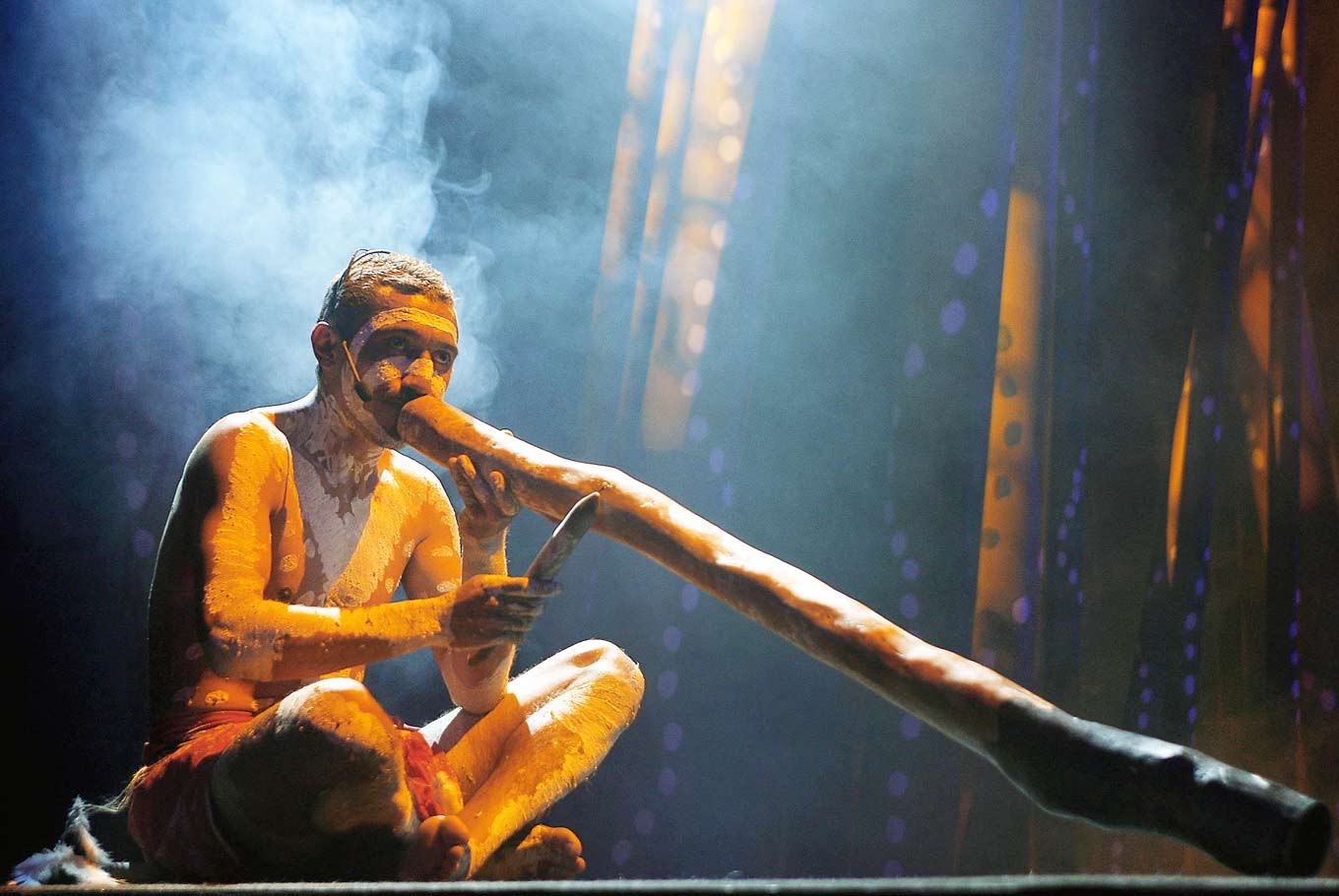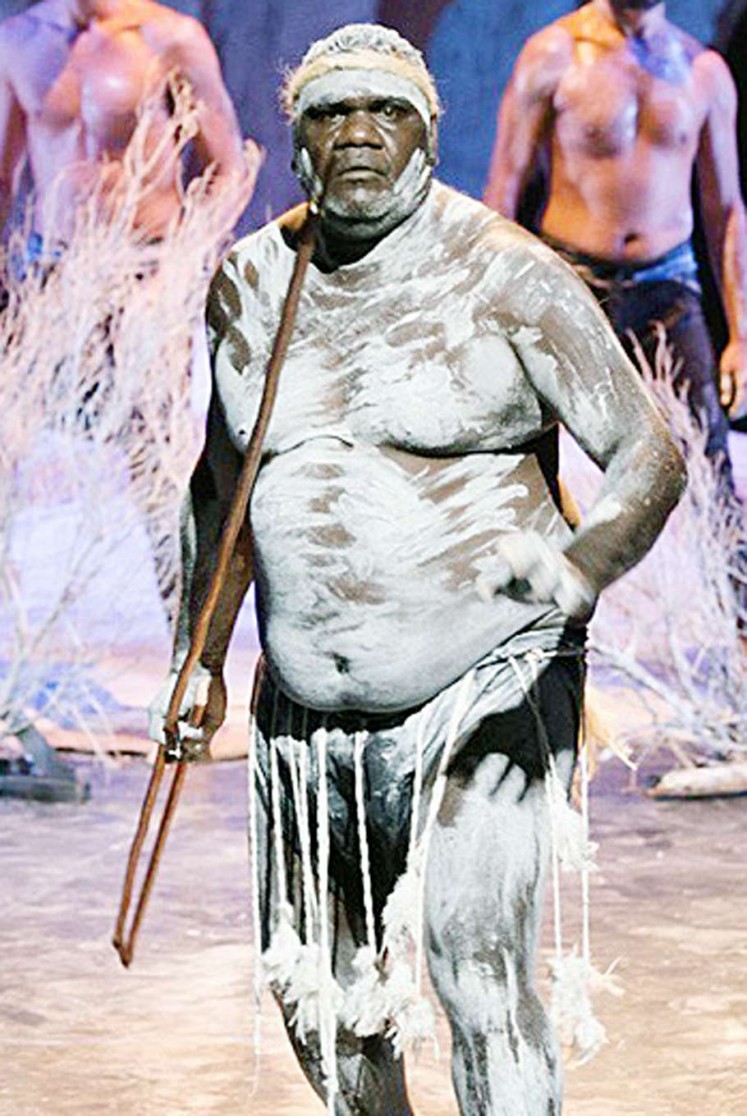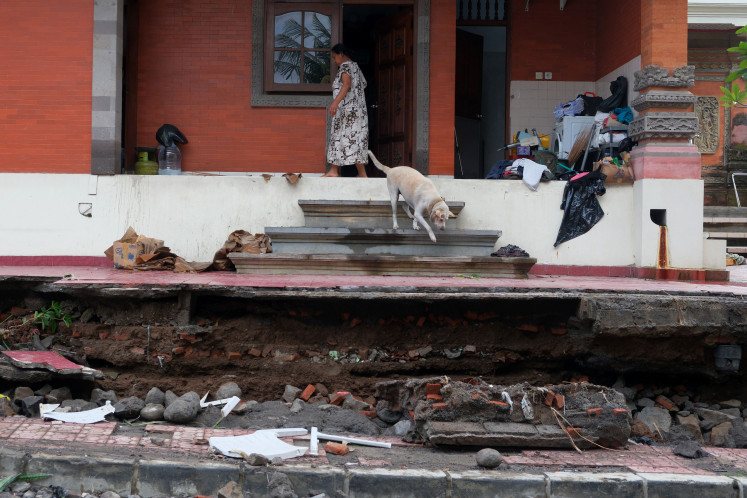Popular Reads
Top Results
Can't find what you're looking for?
View all search resultsPopular Reads
Top Results
Can't find what you're looking for?
View all search results'The Voyage to Marege', a voyage of discovery
Music is not only about nice tunes or lyrics.
Change text size
Gift Premium Articles
to Anyone
W
hen we enjoy a song or a piece of music, what exactly do we like about it? We generally associate music with melodies or tunes, but could we enjoy music without a tune? To put it another way, could music be any good without a nice tune? Fans of Michael Jackson, Queen, Balinese gamelan, Stravinsky, even Beethoven (such as in his “Waldstein” Sonata or many parts of his very popular “Moonlight” Sonata) and Aboriginal songlines would answer “yes.”
Wait. No melodies? Many of you would then certainly ask, “What is music?”
Music is not only about nice tunes or lyrics. As any music student learns, music exists thanks to four basic elements: melody, harmony, rhythm and the (combination of) musical instrument(s) that produce(s) it. It could exist with less, such as the exciting drumming music of many parts in Africa.
Recently, I spent a few days with the Yolngu people in the Northern Territory of Australia, learning their music. Felix Preval, the director of the Darwin International Festival who plans to include the music in their next festival, was a great help in communicating with the Yolngu people during the trip.
Originally, this began as musical research, commissioned by the Australian Embassy in Jakarta for my orchestral work The Voyage to Marege’, but I learned so much about other aspects of life that have enriched me.
“Voyage” will be performed on Aug. 31 with myself conducting a full symphony orchestra, with a didgeridoo player as one of the soloists. A didgeridoo is a large wind instrument of the Australian Aborigines, which produces sounds, not melodies.
This concert is meant as a gift from Australia to the people of Indonesia who are celebrating Independence Day this month, and “Voyage” should serve as a reminder that the good relationship between the two countries has been ongoing since the 18th century.
Marege’ was the name of the area around Arnhem Land where sailors from Makassar landed from the late 18th to the early 20th century. They sailed to collect teripang (sea cucumbers) and bartered for them with spices and other plant products from Sulawesi.
The first European to meet the Macassan sailors in Australia was the navigator Matthew Flinders, when he encountered the sailors of six boats from Makassar in 1803. From them he found out that they had been travelling to the southern continent for the last two decades. Because of the sailor’s journeys south, a cultural exchange happened naturally and some words from the Makassar language were even absorbed into Aboriginal languages, such as rupiya for money, balanda for foreigners, mutiyara for pearls and of course teripang. Some Islamic philosophies were also introduced, which take on special importance in one of the last sections of my orchestral work.
Many Macassan sailors settled in the area around Arnhem Land, leading to mixed descendants as well.
The music of the people in that region could not be disconnected from their beliefs, way of life and thinking. The way Aboriginal people pass on their history, way of life and beliefs is through songlines. Songlines connect the metaphysical world of the Aboriginal people’s “dreamtime” (legends of the creation of the natural world around them such as the moon and the ocean) with their real world. Songlines also record the significant experiences of their lives. In the latter case, we could even compare it to our modern “selfies” every time we meet new people or visit new places.
Djakapurra Munyarryun (Jhuny Boy Borja/File)Traditionally, songlines were about the creation of humankind and the natural world told through song, dance and ceremony. Some of this was, and still is, sacred and therefore they asked me not to make a recording when they sang them to me. At the same time, some parts of this cultural practice are used for communication and, therefore, are known to the wider public and can be found on YouTube and other social media platforms.
That is why when Aboriginal people started to engage in the contemporary art movement they were able to find ways to illustrate their history from of the songlines and put those stories into their paintings. The resulting art has deep spiritual and artistic content, which engages people even when they don’t understand the details of the story behind it.
We can also find similarities between Yolngu songlines and their visual arts. There are certain symbols repeated across their paintings that create a kind of network. This is a symbolic representation of the songline, similar to when musical phrases repeat themselves, even with different words.
One of the most important non-artistic things I learned about was conflict resolution. In the old Yolngu culture, makarrata was a peace-making ceremony to heal divisions of the past between disputing clans. A senior mediator would be called on to oversee the process, which typically involved inflicting pain on the person who had committed the wrong.
Traditionally, a spear to the thigh was an acceptable form of discipline. Once blood had been shed and the cleansing ritual had taken place, clan groups would consider the dispute resolved. Clan groups thereafter had an optimistic future, no grudges were held, and life would continue on for all.
After listening to and talking with didgeridoo player and songline singer Djakapurra Munyarryun, I saw that I was writing a completely different kind of music from that written by Australian composers Peter Sculthorpe or Betty Beath whose works I will perform alongside my own “Voyage” at its world premiere in Jakarta. They wrote for a didgeridoo player that is treated as a soloist within an orchestra while my “Voyage” is basically a “commentary” of the songlines they play.
Apart from that, Djakapurra has never performed with classical musicians and cannot read notes. In any case, “Voyage” has the form of ballet music with an exact musical character in each of its sections to depict certain stories and visual ideas to be choreographed.
I expect it to be an Indonesian contribution to ballet music, like Stravinsky’s “Le Sacre du Printemps” or Tchaikovsky’s “Swan Lake.” But there is one main difference: “Voyage” does not contain a heavy dose of nice tunes (in fact, “Le Sacre” does not either).
And I wouldn’t have been able to create such a work if I hadn’t met the Yolngu people.
***
The writer is a composer and pianist












